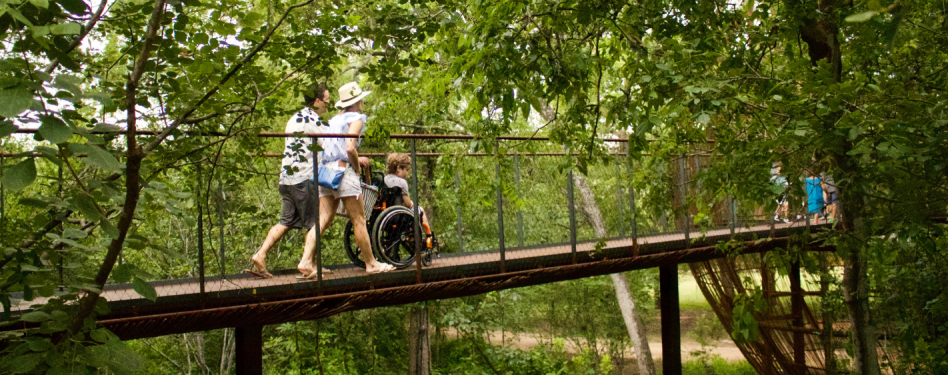
SITES-certified Kingsbury Commons in Austin, TX
Chileans focus on putting education into action with the launch of a new free guide to sustainable landscapes from Chile’s Ministry of Housing and Urbanism and Chile Green Building Council.
In honor of World Green Building Week 2021, Chile GBC released their Sustainable Landscaping Manual, sponsored by the Chilean Ministry of Housing and Urbanism. The guide is available exclusively in Spanish and is available for download through the Chile GBC website or from Google and WeTransfer.
The guide includes a section on SITES, the certification program for sustainable land design and development. Owned and administered by Green Business Certification Inc. (GBCI), the same organization that certifies LEED green building and communities, SITES is now used in 15 countries around the world and quickly expanding.
The SITES rating system addresses soil, vegetation, water and materials, as well as the people and communities who will be impacted by the site. “SITES was created to elevate the value of nature and outdoor spaces in development projects, communities, and cities by bringing essential ecosystem services to the forefront of decision-making and implementation,” says Danielle Pieranunzi, SITES Program Manager at GBCI. “The nature-based solutions outlined in SITES have a multitude of benefits such as controlling flooding, reducing urban heat island effects, improving air and water quality, enhancing mental health, and providing wildlife habitat. The result is a more regenerative and life-enhancing landscape that protects and supports the community, rather than creating a landscape on life support that requires excessive watering, fertilizer and fossil fuel-based maintenance.” The SITES rating system provides a framework and accountability from a third-party certifying body to ensure sustainability, resilience and human health are addressed in every phase of a project’s development.
“Green spaces are critical to supporting human health and wellbeing in our cities,” says Maria Fernanda Aguirre, CEO of Chile GBC. Development leads to an increase in impermeable surfaces – roads, sidewalks, roofs — and a decrease in vegetated areas, which amplifies heat in what is known as a “heat island effect.” Temperatures in Santiago this summer reached over 102 Fahrenheit or 38.9 Celsius, and these rising temperatures are harmful for human health. “We have seen a range of bad outcomes for people’s health due to the heat island effect,” notes Aguirre, “Death and illness due to extreme heat, mental health impacts when people are not able to go outside to play or to enjoy nature, and during the pandemic crisis, parks and green spaces became more important than ever for all of us.”

SITES-certified Avenue of Stars in Hong Kong
To minimize the negative impacts of urban growth, Chile GBC and the Ministry of Housing and Urbanism seek to promote sustainable landscaping and site development practices. The complimentary guide aims to provide critical education and information to landscape architects, developers, engineers, planners and others to take meaningful action to make Santiago and other cities healthier and more resilient places. “People want to set meaningful goals for their projects, and this guide is meant to provide practical resources to inspire strategies, innovation, creativity and cultural change for projects,” says Aguirre.
“We’re used to thinking about the financial savings and benefits to human health of green buildings,” explains Aguirre, “but the same principles apply to landscapes and the savings and impacts are very real for Chileans. We must consider the cost of dealing with storm water runoff and drainage, of treating wastewater and providing potable water to the city. Our country is known for its natural beauty and biodiversity, so we need to protect and provide habitats.”
The comprehensive guide covers best practices and strategies, popular certification programs like the Sustainable SITES Initiative, and case studies of successful urban projects. “We need to be looking at practical steps that we can take to make our cities more livable, more resilient in the face of climate change and to make them beautiful places to be. The hottest real estate in Santiago are offices or residential towers located near beautiful parks – places where you want to spend time playing, shopping or dining,” says Aguirre. “A more sustainable Santiago is also a more beautiful, more economically prosperous Santiago.”
